12 Docker Alternatives Shortlist
Here's my shortlist of the very best Docker alternatives and why each one is great:
- Ubuntu LXD - Best for operating system containerization with a lightweight virtualization solution
- Buildah - Best for creating, building, and updating container images without a full container runtime
- JFrog Software Supply Chain Platform - Best for integrating software supply chain management with security vulnerability detection
- HashiCorp Consul - Best for network automation that ensures secure application delivery
- Sandboxie - Best for isolating applications in a secure sandbox to prevent system alterations
- Azure Container Registry - Best for storing and managing container images across all types of Azure deployments
- Red Hat Quay - Best for secure, private, and automated container registry with geographical replication
- ZooKeeper - Best for distributed, open-source coordination service for distributed applications
- IBM WebSphere Hybrid Edition (Application Server and Liberty) - Best for deploying and managing applications across hybrid environments
- Amazon Elastic Container Registry (ECR) - Best for scalable, secure, and reliable container image storage integrated with AWS
- Google Container Registry - Best for managing, securing, and analyzing container artifacts within the Google Cloud environment
- Sonatype Nexus Repository - Best for universal component management facilitating automation and component intelligence
Navigating the landscape of Linux containers and LXC technology, it's evident that the correct domains container engine can significantly impact your development work. Perhaps you're encountering limitations with the Docker daemon, or you need a solution that can be integrated into a Kubernetes cluster without the overhead of a Docker Swarm or a hypervisor.
You may be looking for a more modular design that manages each process separately or a platform that works with specific programming languages or workloads. Tools like RunC, Kaniko, Virtualbox, and Buildkit can meet these unique needs. Trust in my experience and explore these Docker alternatives - you might find the solution you're searching for.
Overview of the 12 Docker Alternatives
1. Ubuntu LXD - Best for operating system containerization with a lightweight virtualization solution
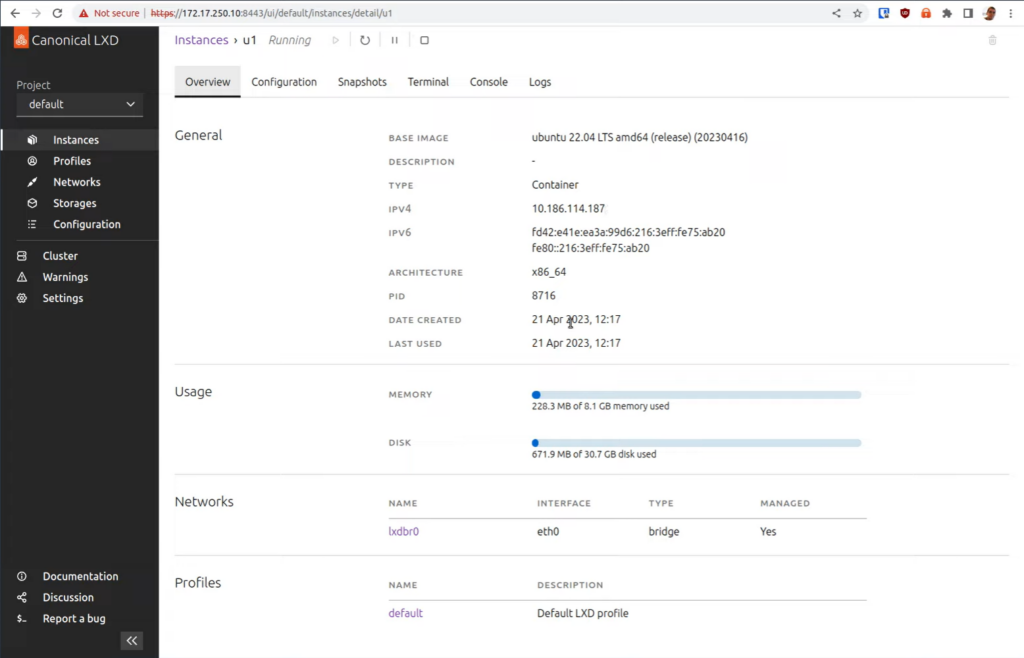
Ubuntu LXD is a container and machine manager that allows users to operate containers as lightweight VMs (virtual machines). This versatile tool can contain total Linux distributions or specific applications, and its containerization approach makes it best for operating system containerization with a lightweight virtualization solution.
Why it's a good Docker alternative:
I selected Ubuntu LXD for this list due to its distinctive approach to containerization, treating them more akin to lightweight VMs. This sets it apart from other tools. Furthermore, this exact functionality makes Ubuntu LXD best suited for operating system containerization. It allows a broader spectrum of applications to be containerized, including those requiring an entire operating system.
Standout features & integrations:
Ubuntu LXD supports multiple storage backends, has a REST API, and provides advanced resource control like GPU, USB pass-through, and more. Furthermore, its live migration of containers allows for impressive flexibility and control. It integrates with OpenStack, the open-source cloud computing platform, and it's compatible with Juju, Ubuntu's service orchestration tool.
Pricing:
Ubuntu LXD is free and open-source. Commercial support is available from Canonical, the company behind Ubuntu, with pricing upon request.
Pros:
- Full operating system containerization
- Lightweight virtualization
- Live migration of containers
Cons:
- Complexity might be overwhelming for beginners
- Commercial support is not included by default
- Requires familiarity with the Linux command line
2. Buildah - Best for creating, building, and updating container images without a full container runtime
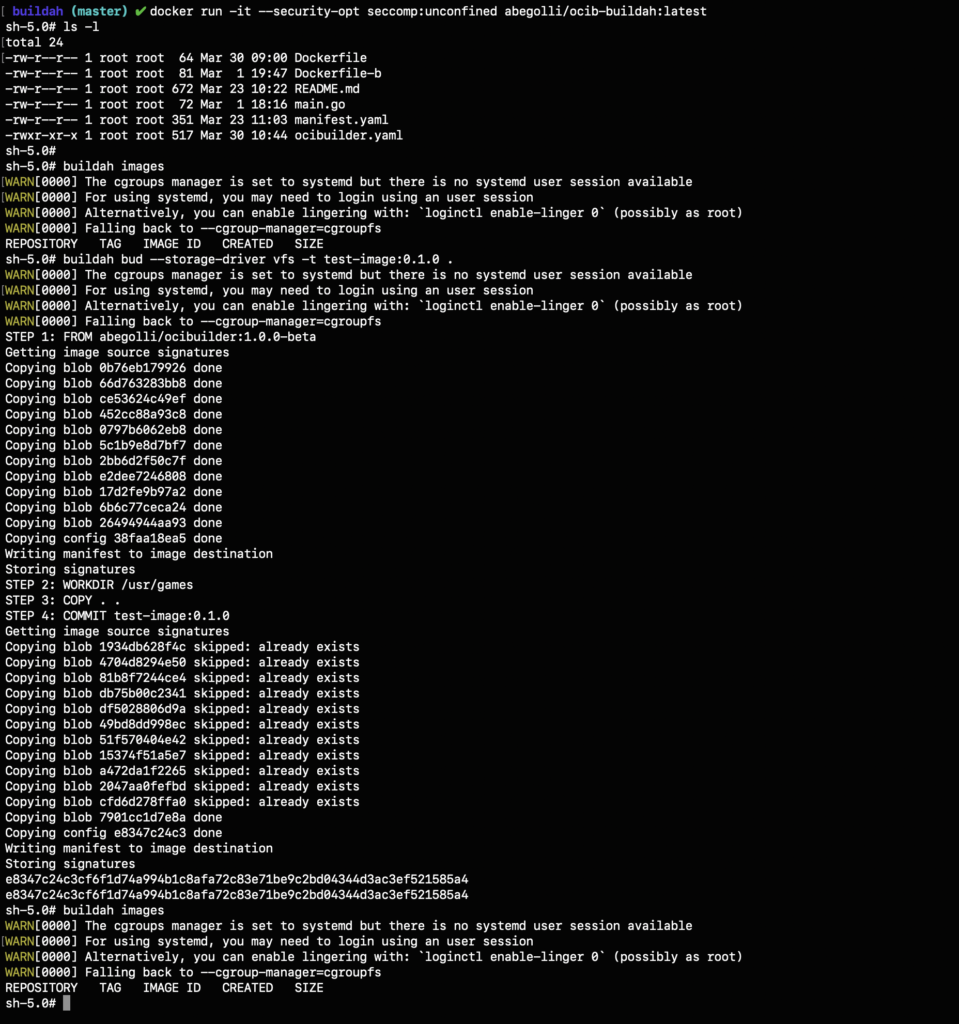
Buildah is an open-source Linux command-line tool that supports Open Container Initiative container images. It facilitates the creation, building, and updating of container images without needing an entire container runtime or daemon running in the background. Its flexibility and simplicity make it best for creating, building, and updating container images without the overhead of an entire container runtime.
Why it's a good Docker alternative:
I chose Buildah because it provides a way to manage containers without requiring a container daemon or root access, a stark contrast to many other tools. The daemon-less architecture reduces resource overhead, making it a lean and efficient solution. Buildah stands out in scenarios where you need to create, build, and update container images, particularly when you want to keep your system lightweight and avoid running an entire container runtime.
Standout features & integrations:
Buildah boasts features like building images from scratch, pulling and pushing ideas to various container registries, and even running containers. It can directly use Dockerfiles and create images using them. It's available on GitHub for any Linux distribution, such as Fedora 32, 33, or 34 and Red Hat Enterprise Linux 8.5. Furthermore, it integrates well with other tools in the container ecosystem like Podman and Skopeo for managing and transferring container images.
Pricing:
Buildah is free and open-source, hence it does not have a direct cost associated with its use.
Pros:
- No daemon required
- Capable of building images from Dockerfiles
- Minimal resource overhead
Cons:
- Limited support for Windows and macOS
- Requires command-line proficiency
- Lack of a graphical user interface
3. JFrog Software Supply Chain Platform - Best for integrating software supply chain management with security vulnerability detection
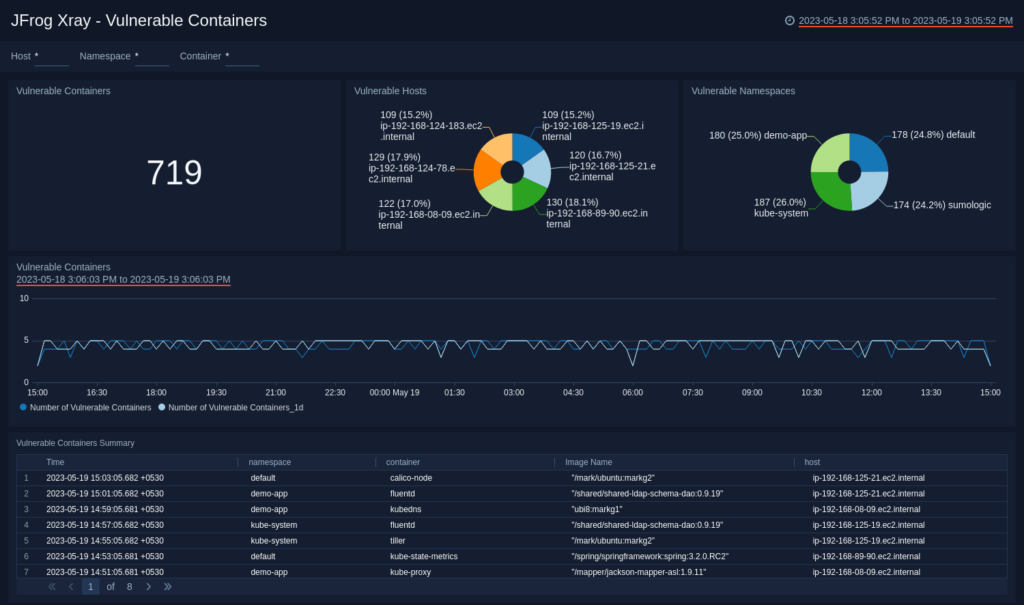
JFrog Software Supply Chain Platform is a comprehensive tool that combines the management of software supply chains with security vulnerability detection. Its security-first approach effectively stands out as the best for integrating software supply chain management with security vulnerability detection.
Why it's a good Docker alternative:
I included JFrog in this list due to its extensive focus on integrating software supply chain management with vulnerability detection, which not all container management platforms focus on. This unique combination of features sets it apart. JFrog's Software Supply Chain Platform is "best for" organizations that need to manage complex software supply chains but also want robust security vulnerability detection embedded in their operations.
Standout features & integrations:
JFrog's standout features include its Artifactory binary repository manager, Xray security and compliance scanning, and Pipelines for end-to-end DevOps automation. The platform provides broad support for all major package formats and integrates with leading CI/CD tools, ensuring smooth deployment and operation.
Pricing:
The pricing for JFrog's Software Supply Chain Platform starts from $29/user/month (billed annually).
Pros:
- Extensive support for package formats
- Built-in security and compliance scanning
- Comprehensive DevOps automation capabilities
Cons:
- May be overkill for smaller projects
- A steeper learning curve for new users
- Premium pricing compared to some competitors
4. HashiCorp Consul - Best for network automation that ensures secure application delivery
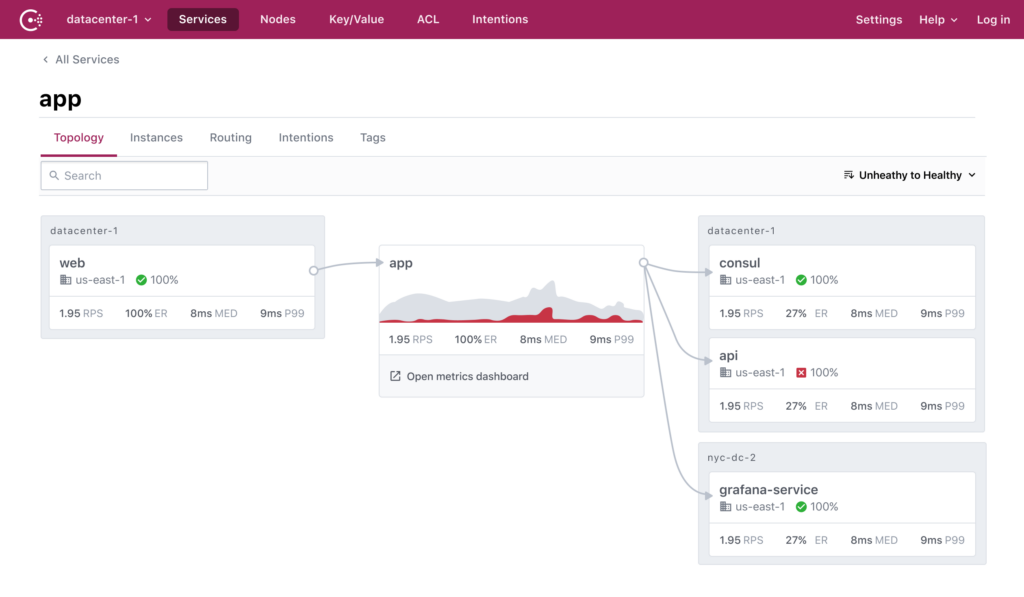
HashiCorp Consul is a tool that emphasizes network automation to ensure secure and reliable application delivery. Its strong focus on service discovery and configuration makes it ideal for network automation and safe application delivery needs.
Why it's a good Docker alternative:
I chose HashiCorp Consul for this list due to its robust network automation capabilities. Unlike other options, Consul focuses on securely delivering applications, making it stand out. I believe HashiCorp Consul is "best for" organizations that prioritize secure and automated network functions for application delivery.
Standout features & integrations:
Consul's notable features include its service mesh for secure inter-service communication, service discovery for dynamic infrastructure, and network infrastructure automation. The tool integrates well with Kubernetes, Vagrant, and Terraform, to name a few, adding to its value in a modern DevOps toolchain.
Pricing:
Pricing for HashiCorp Consul starts from $100/user/month, with a minimum of 10 seats.
Pros:
- Strong network automation capabilities
- Excellent integration with other DevOps tools
- Provides a service mesh for secure inter-service communication
Cons:
- High starting price
- Requires a minimum number of seats (10)
- Has a learning curve, especially for those new to service mesh concepts
5. Sandboxie - Best for isolating applications in a secure sandbox to prevent system alterations
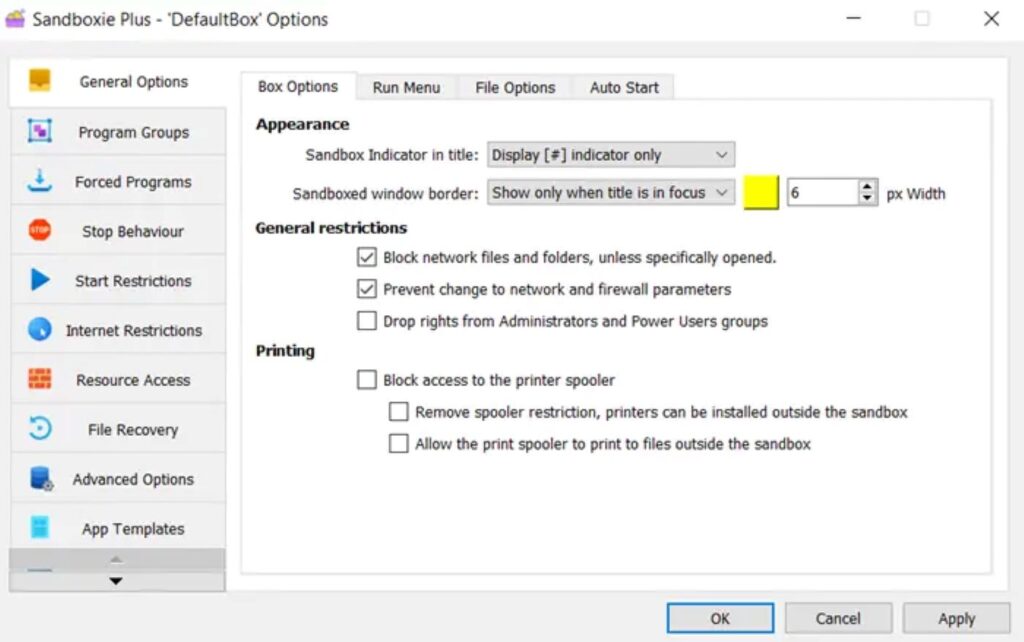
Sandboxie is a platform that isolates applications in a secure sandbox environment. This containment prevents changes to the system, safeguards personal data, and enables safe web browsing. It suits users who want to avoid system alterations from application-level operations.
Why it's a good Docker alternative:
I selected Sandboxie for this list for its unique approach to isolating applications. Its emphasis on creating secure sandboxes for applications to operate within, preventing potential harm to the broader system, sets it apart. I deem Sandboxie "best for" those who need to run applications without risking system-wide modifications.
Standout features & integrations:
Key features of Sandboxie include secure web browsing, privacy protection, and application testing within a sandboxed environment. It integrates with a broad range of Windows applications and web browsers, enhancing its flexibility for users.
Pricing:
Pricing for Sandboxie starts from $20.99/user/month. Please note this is billed annually.
Pros:
- Robust application isolation
- Protects system from alterations
- Offers secure web browsing
Cons:
- Only available for Windows
- Pricing is on the high side for individual users
- Billed annually, not monthly
6. Azure Container Registry - Best for storing and managing container images across all types of Azure deployments
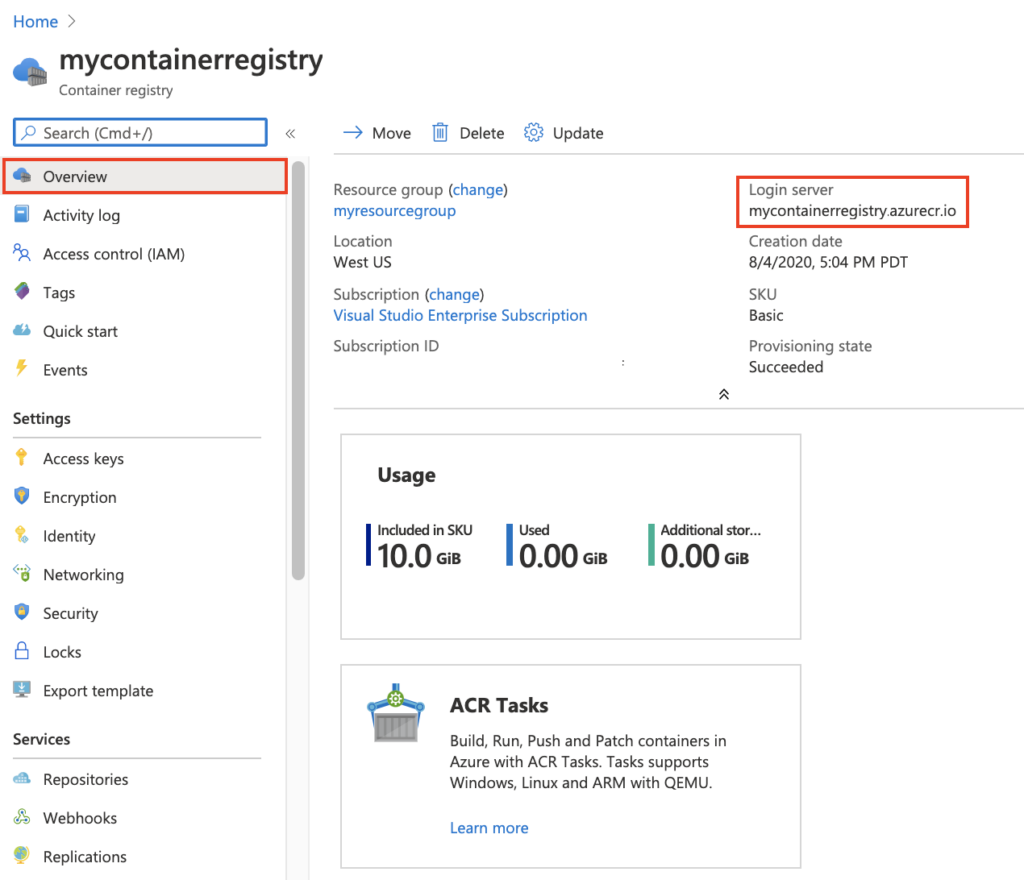
Azure Container Registry is a managed Docker registry service from Microsoft for storing and managing container images. It integrates with existing Azure products and services, allowing users to streamline and simplify their container deployment pipelines. This service is particularly efficient for storing and managing container images across diverse Azure deployments.
Why it's a good Docker alternative:
I chose the Azure Container Registry due to its comprehensive integration with the Azure ecosystem and its ability to manage container images across various Azure deployments. The level of integration offered by Azure makes it a compelling choice for users heavily invested in Azure infrastructure. Therefore, Azure Container Registry is best for those managing container images across different Azure deployments.
Standout features & integrations:
Azure Container Registry supports OCI image format and OCI distribution specification v1.0, enabling broader compatibility with OCI-compliant tools. It also offers geo-replication capabilities, allowing for efficient, global distribution of images. The service integrates well with Azure DevOps, Azure Kubernetes Service (AKS), Docker CLI, and other popular Azure services.
Pricing:
Pricing for Azure Container Registry starts from $5/user/month. This cost does not include data transfer expenses that may apply when pulling images from the registry.
Pros:
- Tight integration with Azure ecosystem
- Supports OCI image format and distribution specification
- Geo-replication capabilities for global distribution of images
Cons:
- Pricing can be complex due to additional data transfer costs
- Less attractive for non-Azure users
- UI could be more intuitive for beginners
7. Red Hat Quay - Best for secure, private, and automated container registry with geographical replication
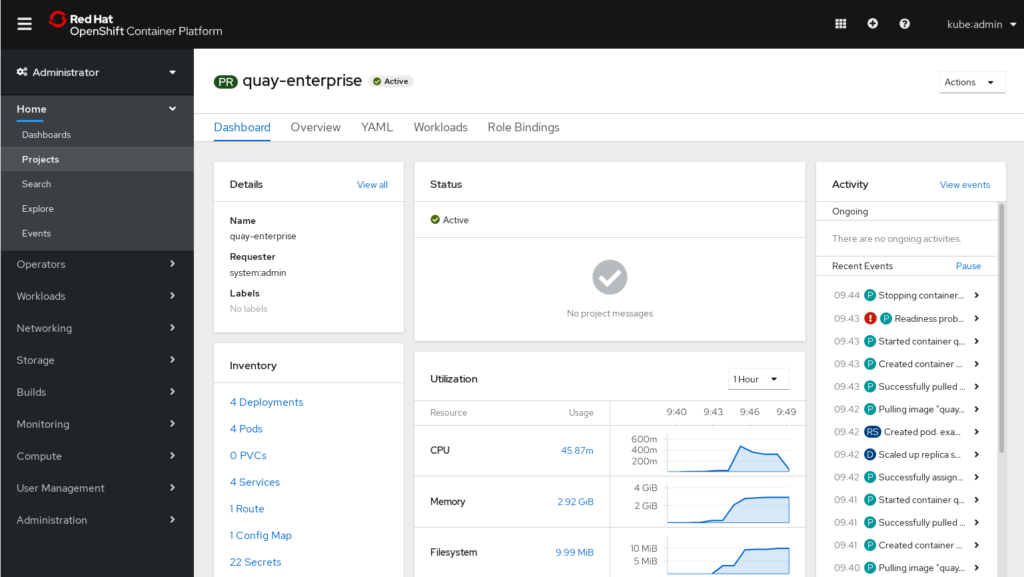
Red Hat Quay is a private, automated container registry from Red Hat that offers robust security features and geographically replicated storage. It has been designed to help organizations streamline their development process and securely manage their container images. The tool stands out, particularly for its security, automated features, and geographical replication.
Why it's a good Docker alternative:
While comparing and selecting different tools, I found Red Hat Quay to stand out due to its unique combination of security features, automation, and geographical replication. These features make Red Hat Quay a compelling choice for teams requiring a secure, private container registry solution. Therefore, I determined that Red Hat Quay is "best for" organizations seeking these functionalities.
Standout features & integrations:
Red Hat Quay has a built-in security scanner, Clair, which continuously monitors your images for vulnerabilities. It also offers geographically replicated storage for high availability and swift image pull performance across diverse geographical regions. Moreover, it supports webhooks and RESTful APIs to integrate your existing development workflows.
Pricing:
Red Hat Quay's pricing starts from $15/user/month (billed annually). The cost can increase depending on the required additional services and the chosen support level.
Pros:
- Integrated security scanner, Clair, for continuous vulnerability monitoring
- Geographically replicated storage for higher availability and performance
- Supports webhooks and RESTful APIs for better workflow integration
Cons:
- Pricing may be high for small teams
- The user interface might be complex for beginners
- The service might be less appealing to organizations not using other Red Hat products
8. ZooKeeper - Best for distributed, open-source coordination service for distributed applications
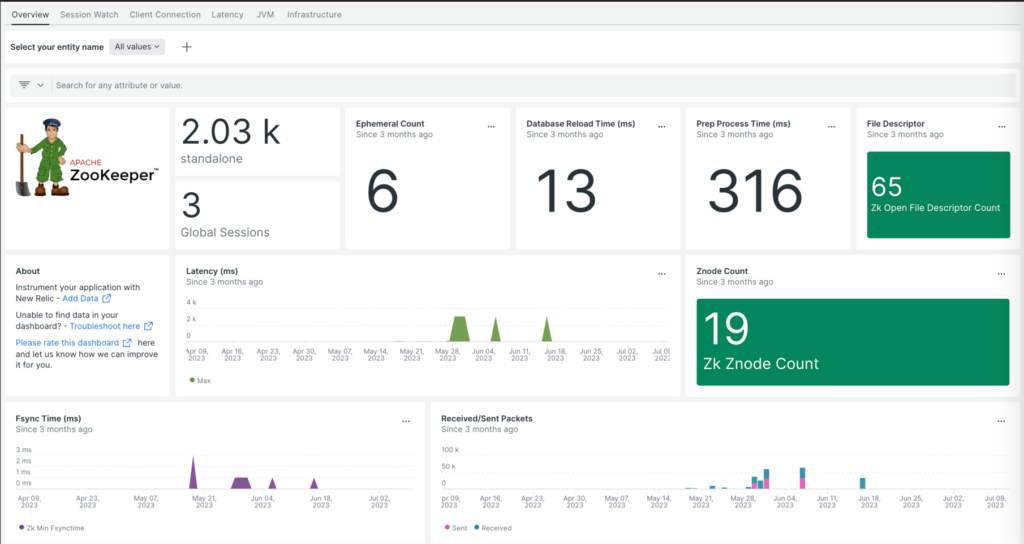
ZooKeeper is an open-source tool from Apache that provides a coordination service for distributed applications. It maintains configuration information, provides distributed synchronization, and enables robust group services, making it ideal for applications requiring such capabilities. With a keen focus on distributed coordination, ZooKeeper is apt for managing such applications.
Why it's a good Docker alternative:
After comparing and selecting different tools, I concluded that ZooKeeper is a viable Docker alternative. I formed this opinion based on its distributed coordination abilities, differentiating it from many other solutions. Therefore, I concluded that ZooKeeper is the "Best for" use case scenario where coordination services for distributed applications are required.
Standout features & integrations:
ZooKeeper's features include distributed configuration service, synchronization service, and naming registry for distributed systems. These enable high-performance coordination of distributed applications. As an Apache project, ZooKeeper can be integrated with other tools in the Apache ecosystem, enhancing its versatility for a wide range of applications.
Pricing:
ZooKeeper is an open-source project and is free to use, though it might necessitate operational expenses depending on the usage scenario and deployment.
Pros:
- Excellent for distributed coordination
- Can be integrated with a wide array of Apache ecosystem tools
- Open-source and free to use
Cons:
- Initial setup might be challenging for newcomers
- Requires manual management and maintenance
- Could be overkill for simple, non-distributed applications
9. IBM WebSphere Hybrid Edition (Application Server and Liberty) - Best for deploying and managing applications across hybrid environments.
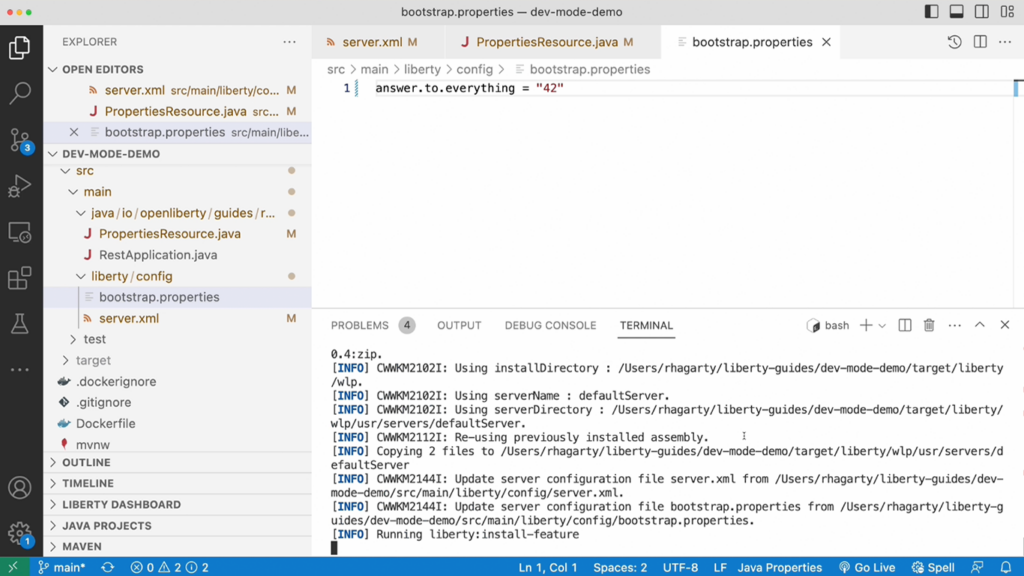
IBM WebSphere Hybrid Edition is a comprehensive application platform solution that includes the traditional WebSphere Application Server and the Liberty profile. Thanks to its adaptability and comprehensive management options, it's an excellent choice for those looking to deploy and manage applications across hybrid environments.
Why it's a good Docker alternative:
After considering various options, I picked IBM WebSphere Hybrid Edition for this list due to its distinct capabilities for deploying and managing applications across hybrid environments. This versatility and robust management options make it a unique solution. Based on these features, I judged it as the "Best for" deploying and managing applications across hybrid environments.
Standout features & integrations:
IBM WebSphere Hybrid Edition offers advanced performance tuning options, integrated intelligent management capabilities, and broad programming model support. Additionally, its integration with IBM Cloud services allows for transition and management across different environments.
Pricing:
IBM WebSphere Hybrid Edition pricing begins from around $57/user/month (billed annually). However, for the most accurate and up-to-date pricing, please consult IBM directly.
Pros:
- Broad programming model support improves its adaptability.
- Advanced performance tuning options offer precise control over application deployment.
- Integration with IBM Cloud services.
Cons:
- The pricing model can be somewhat complex and requires direct consultation with IBM.
- It may come with a steep learning curve for beginners.
- Compared to other solutions, it might come with higher operational costs.
10. Amazon Elastic Container Registry (ECR) - Best for scalable, secure, and reliable container image storage integrated with AWS.
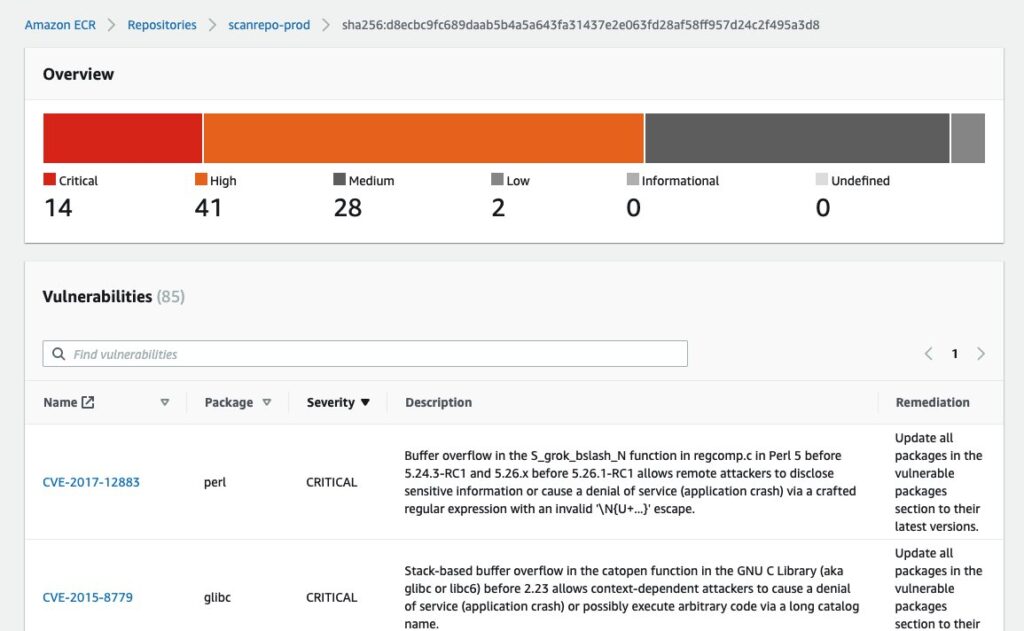
Amazon Elastic Container Registry (ECR) is a fully-managed Docker container registry provided by Amazon Web Services. It helps store, manage, and deploy Docker container images.
Why it's a good Docker alternative:
In my selection process, Amazon ECR stood out as a Docker alternative primarily because of its full integration with AWS services, scalability, and excellent security features. These aspects and its reliability make it an outstanding choice, particularly for those heavily invested in the AWS ecosystem. I believe Amazon ECR is the best tool for scalable, secure, and reliable container image storage integrated with AWS.
Standout features & integrations:
Amazon ECR comes with noteworthy features such as image scanning for vulnerabilities, lifecycle policies for managing photos, and tight integration with AWS Identity and Access Management (IAM) for resource-level control of each repository. It also integrates with AWS Fargate and Amazon ECS, enabling developers to deploy containers robustly and efficiently.
Pricing:
Amazon ECR prices start from approximately $0.10 per GB per month for storage and $0.09 per GB for data transfer. AWS offers a free tier which includes 500MB of storage per month.
Pros:
- Tight integration with AWS services provides a development and deployment experience.
- Robust security features, such as IAM integration and image scanning for vulnerabilities, ensure the secure storage and deployment of Docker containers.
- Its scalability makes it a strong choice for large-scale applications.
Cons:
- Pricing can get expensive, especially for heavy data transfer and storage needs.
- It may be less ideal for those not already invested in the AWS ecosystem.
- There may be potential learning curves, particularly for those new to AWS.
11. Google Container Registry - Best for managing, securing, and analyzing container artifacts within the Google Cloud environment.
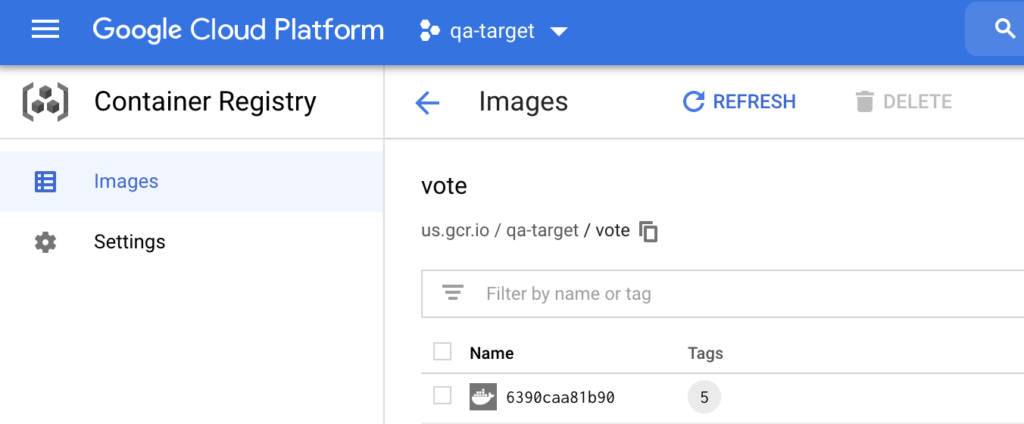
Google Container Registry is a private Docker repository provided by Google Cloud that offers secure, scalable, and reliable hosting for your Docker images. The service integrates with popular continuous delivery and deployment systems.
Why it's a good Docker alternative:
When deciding on Docker alternatives, I selected Google Container Registry due to its strong security, granular access controls, and deep integration with Google Cloud. These characteristics are why it is the best tool for managing, securing, and analyzing container artifacts within the Google Cloud environment.
Standout features & integrations:
Key features of Google Container Registry include vulnerability scanning, automated build triggers, and access control options at the project and resource levels. It integrates with Google Kubernetes Engine (GKE), Cloud Build, and Cloud Run, making it particularly convenient for managing and deploying containerized applications within the Google Cloud environment.
Pricing:
Pricing for Google Container Registry begins at approximately $0.026 per GB per month for storage and $0.12 per GB for network egress. Pricing may vary depending on data usage and region. Google Cloud also provides a free tier which includes limited storage.
Pros:
- Deep integration with Google Cloud services eases the process of managing and deploying containerized applications.
- Security features like vulnerability scanning and granular access controls ensure the secure storage of Docker images.
- The ability to automate build triggers can significantly streamline development workflows.
Cons:
- Pricing can escalate with increased storage and network usage.
- It may be less suitable for teams not already utilizing the Google Cloud ecosystem.
- Understanding and optimizing the full feature set may require a steep learning curve.
12. Sonatype Nexus Repository - Best for universal component management facilitating automation and component intelligence.
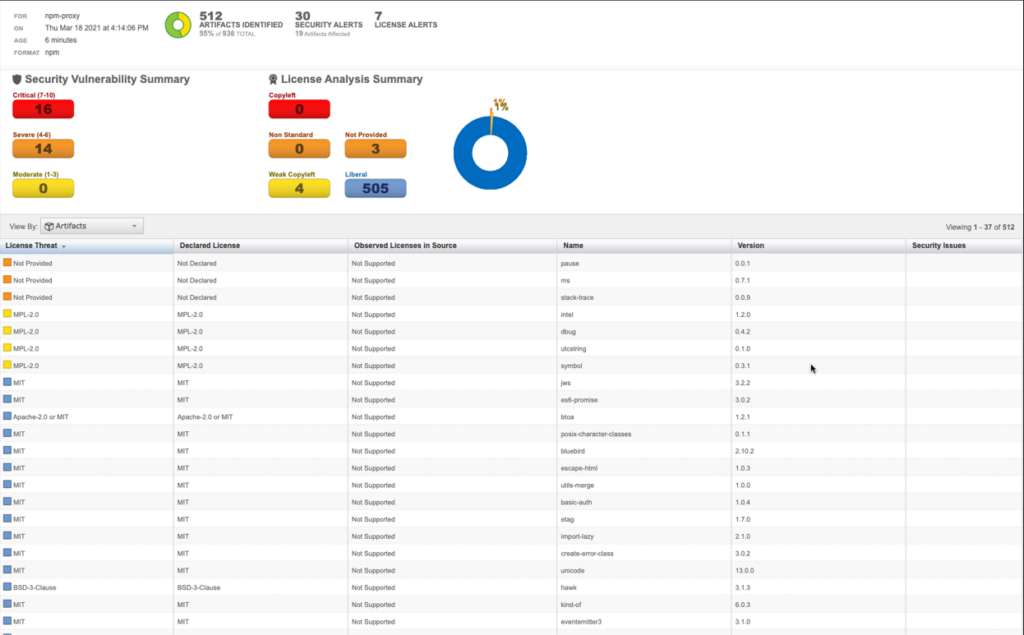
Sonatype Nexus Repository is a robust tool that serves as a repository manager, allowing you to proxy, collect, and manage dependencies to avoid continually juggling a collection of JARs. Nexus Repository is primarily known for facilitating automation and component intelligence, making it a universal solution for component management.
Why it's a good Docker alternative:
I picked Sonatype Nexus Repository as a Docker alternative for several reasons. Its ability to store and distribute Docker images, extensive support for other types of packages, and advanced component intelligence features make it a unique solution. These characteristics position Sonatype Nexus Repository as the ideal tool for universal component management, facilitating automation and component intelligence.
Standout features & integrations:
Sonatype Nexus Repository offers excellent features like proxy repositories that let you cache components from public repositories like Docker Hub and hosted warehouses that enable you to host internal artifacts. It also supports integration with many build tools and servers like Jenkins, Eclipse, and more.
Pricing:
Sonatype Nexus Repository has a free version, but its Professional performance starts from $120/user/year (billed annually), which comes down to $10/user/month.
Pros:
- Supports a wide range of package formats, not just Docker images.
- High-quality component intelligence and extensive automation capabilities.
- Supports integration with a variety of build tools and servers.
Cons:
- The user interface might seem a bit complex for beginners.
- Professional version is relatively expensive.
- Larger teams may encounter performance issues with the free version.
Other Notable Alternatives to Docker
Below is a list of additional Docker alternatives that I shortlisted, but did not make it to the top 12. Definitely worth checking them out.
- Vagrant - Good for streamlining development environment setup and management
- Containerd - Good for high performance container execution with strong emphasis on simplicity
- ZeroVM - Good for secure, distributed, and lightweight virtualization
- Podman - Good for running and managing OCI containers without a daemon
- OpenVZ - Good for server virtualization with efficient resource utilization
Selection Criteria for Choosing Alternatives to Docker
When selecting Docker alternatives or any container management tool, key criteria played a significant role in my judgment. Throughout my evaluation, I tested and compared over twenty different tools, focusing on their ability to provide specific functionalities, ease of use, and unique features. Below, I delve into the primary criteria I kept in view while making my choices.
Core Functionality
- Container orchestration: The tool should offer automated container deployment, scaling, and management.
- Multi-environment compatibility: The tool should work well across multiple environments, such as development, testing, and production.
- Security: Robust security measures for container isolation and mitigating risks are crucial.
- Resource optimization: The tool should efficiently use system resources to minimize overhead.
Key Features
- Scalability: The tool needs to manage a few containers as efficiently as it does thousands, handling growing demands.
- Portability: The ability to run on any platform, cloud, or bare-metal environment.
- Robust API: For advanced integrations and automation.
- Monitoring and analytics: To track application performance and resource usage, aiding in troubleshooting and optimization.
Usability
- Intuitive interface: The tool should be easy to navigate and manage, with a dashboard that displays crucial information.
- Documentation and support: Comprehensive resources, tutorials, and strong community or customer support are invaluable for problem-solving and learning.
- Smooth onboarding: Setting up and deploying containers should be straightforward.
- Integration capabilities: The tool should integrate well with other services and tools in the DevOps lifecycle for a unified workflow.
Why Look for a Docker Alternative?
Docker is a platform that utilizes containerization to package and distribute software applications and their dependencies in a standardized container unit. This approach allows applications to run smoothly and reliably across diverse environments. Docker is a popular platform that uses container technologies to package and run applications in isolated environments, leveraging the Linux kernel.
Despite its broad functionality and popularity, some users seek Docker alternatives for specific needs. With Docker, software developers can ensure consistency across multiple environments, from standalone units to cloud-native applications, utilizing an intuitive command-line interface and tools like Docker Compose. Consequently, while Docker offers a robust solution for many, exploring alternative container management software can yield a more tailored fit for particular use cases and environments.
Most Common Questions Regarding Docker Alternatives (FAQs)
What are some benefits of using Docker?
Here are the benefits of Docker:
- Enables efficient application isolation, streamlining the development, testing, and deployment process.
- Images are portable, meaning they can be used across different platforms.
- It allows for resource optimization, enabling multiple containers to run on the same host without each needing its OS.
- Ensures consistency across multiple environments, including development, testing, and production.
- Has a robust ecosystem with numerous tools and applications for container management, providing a wide range of user options.
How much does Docker cost?
Docker offers a range of pricing options. For individual use, is free. Docker Pro costs $5 per month, providing enhanced features like GUI-based management and priority support. Docker Team, designed for collaborative work, costs $7 per user per month.
How do Docker alternatives price their offerings?
Pricing for Docker alternatives varies significantly. Some offer free tiers or open-source solutions, while others have paid versions with additional features. Paid plans are typically based on the number of users, servers, or the level of support required.
What is the typical range of pricing for Docker alternatives?
The pricing for Docker alternatives can start from $0 for open-source or free versions and go up to hundreds of dollars per month for enterprise-level offerings.
What is the cheapest and most expensive Docker alternative?
Among the mentioned Docker alternatives, Vagrant and Podman can be the least expensive options as they are open-source and free to use. On the higher end of the spectrum, IBM WebSphere Hybrid Edition can be considered the most expensive, with monthly plans starting from $90 per Virtual Processor Core (VPC).
Are there any free Docker alternatives?
Yes, several Docker alternatives are available for free. Examples include open-source projects like Vagrant, Podman, and OpenVZ. It's important to note that while these tools do not have a direct cost, they may require more time and expertise to implement and manage effectively.
Are Docker alternatives as good as Docker?
Whether a Docker alternative is 'as good' as Docker depends on the specific use case and requirements. Some other options offer features that Docker does not, and vice versa. It's essential to evaluate the needs of your project and team before choosing a tool.
Why should I consider Docker alternatives?
While Docker is a robust tool, there might be specific use cases or functionalities not addressed by Docker but handled well by its alternatives. For instance, if you want to work in a non-daemon environment, Podman could be a good fit. If you need tight integration with AWS or Google Cloud, consider Amazon ECR or Google Container Registry, respectively. It's all about finding the right tool for your specific needs.
More Docker Alternatives Reviews
Summary
Choosing the best Docker alternative requires careful consideration of your specific use case and needs. From the extensive examination of various container management tools, the following key takeaways emerge:
- Understand Core Functionality: Assessing the core functionalities such as container orchestration, multi-environment compatibility, security, and resource optimization is vital. These factors define the essential performance and capabilities of the tool, ensuring it aligns with your project's requirements.
- Evaluate Key Features: Look for specific features like scalability, portability, robust APIs, and monitoring capabilities. These features are not just add-ons but essential attributes that can significantly affect how the tool performs in real-world scenarios.
- Consider Usability: The design, ease of onboarding, interface, customer support, and integration capabilities all play a crucial role in the product’s usability. A tool with an intuitive interface and comprehensive support can save time and resources in the long run.
By focusing on these aspects, you can navigate the myriad of Docker alternatives and select the one that fits your organization's workflow, budget, and long-term goals. Understanding these criteria will guide you to a solution that complements your container management needs, whether it's a small development team or a large enterprise environment.
What do you think?
I've aimed to provide a comprehensive list of Docker alternatives here, but the realm of container management tools is ever-expanding. If you know of any tools that should have made the list or have had a remarkable experience with a tool not mentioned here, I'd love to hear from you.
Your input could be invaluable for those seeking the right tool for their specific use cases. Please feel free to share your suggestions or experiences in the comments. Your insights could guide others on their journey to finding the perfect Docker alternative.
